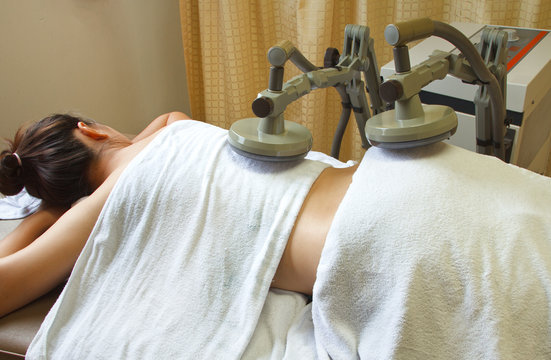An Overview of Diathermy and Its Uses in Medicine
Diathermy
Diathermy is a medical procedure that uses heat to heal tissue. It's a common treatment for a variety of conditions, and there are several different types of diathermy that can be used depending on the particular application.

In this article, we'll give you an overview of diathermy and its many uses in medicine. We'll start by discussing the different types of diathermy and how they're used, then we'll take a look at some of the common applications for diathermy. Finally, we'll discuss the pros and cons of this treatment and offer some tips on how to prepare for a diathermy treatment.
What Is Diathermy?
Diathermy is a medical treatment that uses high-frequency electrical current to generate heat. The heat is then used to treat a range of medical conditions.
Diathermy was first developed in the early 1900s, and it's been used ever since to treat a range of medical conditions. Today, diathermy is used in a range of medical treatments, including surgery, cancer treatment and pain relief.
Overview of the Types of Diathermy
There are three types of diathermy:
1. Radiofrequency diathermy: This is the most common type of diathermy, and it uses high-frequency waves to produce heat. This type of diathermy is used to treat a range of conditions, including pain, inflammation and blood clots.
2. Ultrasound diathermy: This type of diathermy uses ultrasound waves to create heat. It's most commonly used to treat tumors and cysts.
3. Microwave diathermy: This type of diathermy uses microwaves to produce heat. It's used to treat conditions such as abscesses and tumors.
Uses of Diathermy in Medicine
Diathermy is a form of surgery that uses heat to treat conditions in the body. Surgeons use it to stop bleeding, kill cancer cells and to destroy diseased tissue. It can also be used to remove tumors.
The main advantage of diathermy is that it causes less damage to the surrounding tissue than other forms of surgery. This is because it kills the cells directly in contact with the heat. The technique can be used on a range of tissues, including fat, muscle, nerves and blood vessels.
Advantages and Disadvantages of Medical Diathermy
Now that you understand how diathermy works and the various ways it is used in medicine, it’s important to discuss the pros and cons of this treatment. Every decision should be made in consultation with a healthcare professional, and understanding the potential benefits and risks is key.
One main benefit of diathermy is its ability to penetrate deep tissue, meaning it can help treat a variety of medical issues. It can also be helpful in reducing pain and inflammation, as well as increasing blood circulation at the site of injury. Diathermy does not require medications or anesthetic and has fewer side-effects than other treatments like surgery or radiation therapy.
However, there are some potential disadvantages to consider. Diathermy can cause superficial burns or skin irritation if used improperly and may not be suitable for certain medical conditions. In addition, this type of treatment can sometimes be costly and may not always be covered by insurance plans or Medicare programs.
Safety Measures for Medical Diathermy Use
Before using diathermy for medical purposes, it’s important to take all necessary safety precautions. For example, in order to protect patients from potential tissue damage, exposed parts of the body should be shielded. It’s also recommended to wear protective eyewear and to take care when handling the diathermy equipment, as it can be highly charged.
It’s also a good idea to ensure that the environment is properly ventilated before beginning a procedure. This is to reduce the amount of heat generated during treatment and help prevent heat from accumulating in enclosed areas such as operating rooms. If the machine is operated correctly and safety precautions are followed, diathermy can be an effective method for treating medical conditions without risk of harm.
Potential Side Effects of Medical Diathermy
There are potential side effects associated with medical diathermy, and the majority of them are related to the heat. First, there is the risk of burning if the procedure is not properly monitored and controlled. There is also a risk of infection, as well as general skin irritation. Additionally, there is a chance that some people may develop a skin allergy to the silver or copper used in medical diathermy.
For people who have implanted medical devices like pacemakers or defibrillators, there is also a risk that the diathermy could interfere with their operation. To reduce this risk, it's important to inform your doctor or practitioner if you have any implanted devices before undergoing diathermy treatment. While it's possible to treat those with implanted devices safely, extra caution needs to be taken during any treatments that involve heat.
Ultimately, it’s important to note that all medical treatments come with potential risks, and diathermy is no exception - so make sure to talk with your doctor before opting into any procedures!
Diathermy is a technique that uses heat to treat medical conditions. The heat can be applied in two ways - through ultrasound, or with a high-frequency electric current.
Ultrasound diathermy is most commonly used to treat deep-seated infections or tumors. The ultrasound waves cause the tissue to vibrate, which creates heat. This heat kills the infection or tumor, and also helps to reduce swelling.
High-frequency electric current diathermy is used to stop bleeding and to kill bacteria. It is also used to treat conditions such as warts, skin tags and verrucas.

Comments
Post a Comment